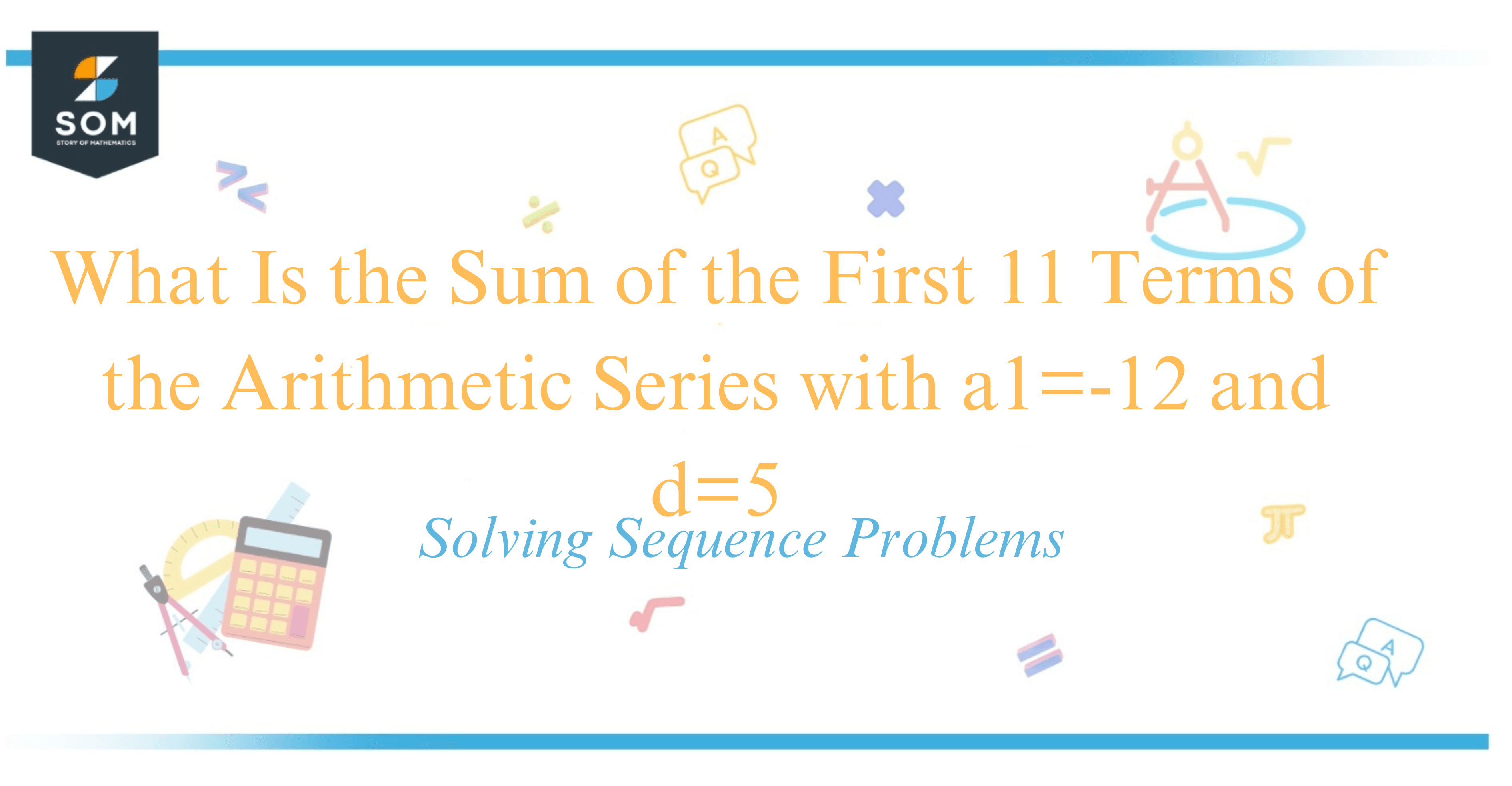
The sum of the first 11 terms of the arithmetic series with the first term $a_1=-12$ and common difference $d=5$ can be determined using the arithmetic series sum formula. In an arithmetic sequence, each term after the first is found by adding the common difference to the preceding term.
This characteristic leads to a predictable pattern of numbers that have a constant difference between each pair of consecutive terms. To find the sum of the first 11 terms of such a series, I’ll use the formula: $S_n = \frac{n}{2}(2a_1 + (n-1)d)$, where $S_n$ is the sum of the first $n$ terms, $a_1$ is the first term, $d$ is the common difference, and $n$ is the number of terms.
To add a bit of context, the concept of arithmetic sequences is fundamental in the study of algebra and is frequently encountered in various mathematical problems and real-life situations.
Mathematics often showcases elegant patterns, and arithmetic sequences embody this beautifully—a simple and predictable progression that unfolds with each term. Join me as we explore the intriguing world of arithmetic sequences and uncover the sum of their terms.
Calculating the Sum of Arithmetic Series
When I’m faced with the challenge of finding the sum of the first few terms of an arithmetic series, I always rely on a specific formula that takes into account the first term, the common difference, and the number of terms I wish to add.
An arithmetic series is simply the addition of the terms in an arithmetic sequence, where each term increases by a steady amount, known as the common difference (d).
For example, if I want to calculate the sum of the first 11 terms of the series where the first term (a₁) is -12 and the common difference (d) is 5, I would use the following formula:
$$ S_n = \frac{n}{2} [2a_1 + (n-1)d] $$
Where:
- Sₙ is the sum of the first n terms
- a₁ is the first term
- d is the common difference between the terms
- n is the number of terms I want to sum up
To find the last term (aₙ), which I need for some alternative formulas, I use:
$$ a_n = a_1 + (n-1)d $$
Let’s put these formulas into practice:
| Variable | Value |
|---|---|
| a₁ | -12 |
| n | 11 |
| d | 5 |
Now, I calculate the sum (S₁₁):
$$ S_{11} = \frac{11}{2} [2(-12) + (11-1)5] $$
$$ S_{11} = \frac{11}{2} [-24 + 50] $$
$$ S_{11} = \frac{11}{2} [26] $$
$$ S_{11} = \frac{286}{2} $$
$$ S_{11} = 143 $$
Therefore, the sum of the first 11 terms of this arithmetic series is 143.
I keep in mind that while an arithmetic sequence calculator could streamline the process, comprehending and manually applying the formula creates a solid foundation for solving arithmetic sequence problems with solutions. It’s rewarding to see how such a simple pattern of adding a fixed number repeatedly can lead to a quick solution for this type of series.
Arithmetic Sequences Example
In this example, we’re looking at arithmetic sequences, a type of sequence in math where the difference between consecutive terms is constant. I’ll demonstrate how to calculate the sum of the first 11 terms with a given first term and common difference.
Here, the first term, $ a_1 $, is (-12), and the common difference, ( d ), is (5). I can use the following arithmetic sequence formula for the ( n )-th term:
$a_n = a_1 + (n-1)d$
To find the 11th term $a_{11}$:
$a_{11} = -12 + (11-1)\times 5$
$a_{11} = -12 + 10\times 5 $
$a_{11} = -12 + 50 $
$a_{11} = 38$
Here’s a quick table showing the sequence development:
| Index (n) | $a_n $ |
|---|---|
| 1 | (-12) |
| 2 | (-12 + 5 = -7) |
| … | … |
| 11 | (-12 + 50 = 38) |
The equation to evaluate the sum of the first ( n ) terms in an arithmetic sequence is:
$S_n = \frac{n}{2}(a_1 + a_n)$
Now, let’s calculate the sum of the first 11 terms$S_{11} $:
$S_{11} = \frac{11}{2}(-12 + 38)$
$S_{11} = \frac{11}{2}(26)$
$S_{11} = \frac{286}{2}$
$S_{11} = 143$
The sum of the first 11 terms of this arithmetic sequence is (143). Each term is determined by its index, the function of the sequence, and follows a pattern with a constant difference. This demonstrates how arithmetic sequences work, whether the numbers are positive or negative.
Conclusion
In our exploration of arithmetic sequences, I’ve demonstrated how to find the sum of the first 11 terms of a specific series. Starting with the initial term, a1, set at -12 and a common difference, d, of 5, I applied the formula for the sum of an arithmetic series:
$$ S_n = \frac{n}{2}(2a_1 + (n – 1)d) $$
Here, n represents the number of terms. Substituting our values into the formula:
$$ S_{11} = \frac{11}{2}(2(-12) + (11 – 1) \cdot 5) $$
Simplifying the arithmetic inside the parentheses gives us the sum we’ve been looking for:
$$ S_{11} = \frac{11}{2}(-24 + 50) $$ $$ S_{11} = \frac{11}{2} \cdot 26 $$ $$ S_{11} = 11 \cdot 13 $$ $$ S_{11} = 143 $$
Therefore, the sum of the first 11 terms of this arithmetic series is 143. By understanding the general formula, I was able to calculate this sum quickly and efficiently. This process can be used for any arithmetic series, provided you know the first term and the common difference.
